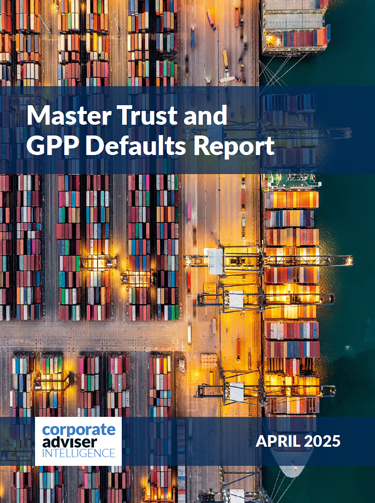Consultants are calling for greater clarity around pension reforms, particularly as the Chancellor Rachel Reeves reaffirmed in her Spring Statement that these will be a central plank of the government’s future growth agenda.
Hymans Robertson head of pension policy innovation Calum Cooper says the industry was hoping for an update in the Spring Statement. “The lack of clarity from the Chancellor in today’s Spring Statement around pensions – not least the lack of clarity around the second stage of the DWP Pensions Investment Review is disappointing.
“As an industry, we need a clear timetable with detailed terms of reference, as well as a firm start date, to ensure that the energy and momentum of this vital initiative continues. With each passing month further challenges are being placed on individuals to ensure their ability to achieve a good retirement, particularly amid a continued cost of living crisis.”
He adds: “With dashboards making inadequacy transparent, and the State Pension Age Review in 2026: the government may feel the pensions platform is on fire.
“But the Spring Statement also laid bare our immense fiscal challenges. The government will be anxious about running into Phase 2 of the Pensions Investment Review. But they needn’t be; through working with the pensions industry and understanding the needs of members, a better future is possible. The focus should be using Phase 2 as a growth catalyst that people across the country feel good about. A package of pensions measures that are attractive to savers, employers and government is the perfect solution. One that balances the challenges of today with later life financial independence. This is what Phase 2 will be able to deliver, and in tandem this could dovetail with the state pension age review, as part of a holistic approach to better pensions.”
Meanwhile Gallagher’s chief actuary of its benefits & HR consulting division Sarah Brown says further “big ticket pension reforms” are on the horizon. This includes the Pensions Investment Review and the long-awaited response to the DWP’s ‘options for DB schemes’ consultation.
She says: “The consultation response will finally clarify how well-funded DB schemes can safely unlock surplus funds, but trustees shouldn’t wait until spring to assess their scheme’s funding position. Trustees who plan ahead and explore what a long-term run-on strategy with surplus release might look like for their scheme will be in a stronger position when the new rules take effect.”
Brown adds that the forthcoming Pension Schemes Bill will also include measures to ensure pensions deliver value for money, alongside long-overdue plans to consolidate small, forgotten pots.
She adds: “While tax hikes may have been avoided today, the OBR’s forecasts could lay the groundwork for tougher fiscal decisions that impact retirement savings down the line. One major change is already coming with pension pots falling within the inheritance tax (IHT) from April 2027. Many older, wealthier individuals had planned to pass unspent pensions to their children, but with the looming IHT charge, many are now choosing to spend rather than save, shifting the retirement planning landscape.”
Brown added her voice to industry comments that the triple lock could also be under review in future, if the public finances remain stretched. “Despite reports that the triple lock is close to being axed, it remains intact for now, even as the Chancellor grapples with spending cuts and tough fiscal choices. However, its long-term sustainability is clearly under increasing scrutiny.”
Others in the industry pointed out that with an inflation-busting increase to the State Pension this April means this state benefits will be just 15p below the personal allowance. Quilter head of retirement policy Jon Green adds: “The OBR’s latest forecasts confirm we are fast approaching a bizarre tax cliff edge for pensioners. With the state pension forecast to rise by 4.6 per cent in April 2026 under the triple lock, it will land just below the frozen personal allowance.
“That leaves the UK potentially only one year away from pensioners having to effectively hand a portion of their state pension back to the Exchequer in tax, which to many would seem perverse.
“Reeves had committed to keeping allowances frozen until 2028 but, depending on what the actual uprating figure may be, could look to avoid the full state pension exceeding the personal allowance via the Autumn Statement later this year.”
He adds: “What was intended as a mechanism to protect pensioners from poverty is now colliding with fiscal drag.”
Brown says: “The challenge is balancing fiscal responsibility while ensuring retirees have adequate incomes. Although means-testing could cut costs by providing support to those who need it most, this comes with complex administrative hurdles. While reform seems inevitable, the real question is how we can keep the policy affordable as the costs mount up.”
Meanwhile Towergate Employee Benefits said that Spring Statement highlighted the investment needed by employers to keep people in work. Its head of group risk David Williams says: “Commentary on today’s Spring Statement will understandably focus on the Office for Budget Responsibility’s (OBR’s) downgrade of growth for 2025 (from 2 per cent to 1 per cent) but what resonated with me was the OBR’s view of what happens in the years that follow. The OBR view is that by spending money wisely this year, the UK’s growth forecast in future years will improve.
“The Government’s plans for this growth include a keen focus on the welfare system. There are 2.8 million people economically inactive in the UK due to ill health, but to get these people active again, the Government needs to invest in their welfare. This is a familiar message for us in the employee benefits industry.
“The welfare reforms announced last week didn’t just cut benefits but they included investment in helping people to start work, stay in work or try a return to work without losing their benefits. All crucial initiatives to kick-start an inactive population.
“So the message to businesses should be the same. If your business is sluggish, invest wisely in the welfare of your people. You may not see the immediate growth today, but you will reap the rewards in future years.”





